
How to Use Ultrasonic Waterproof: Examples, Pinouts, and Specs
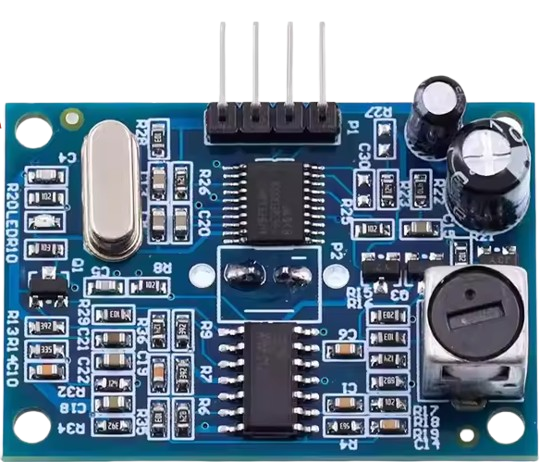
 Design with Ultrasonic Waterproof in Cirkit Designer
Design with Ultrasonic Waterproof in Cirkit DesignerIntroduction
The Ultrasonic Waterproof Sensor is a robust and versatile electronic component designed to measure distances or detect objects using ultrasonic waves. Its waterproof design makes it ideal for outdoor or wet environments, where exposure to water or moisture is a concern. This sensor emits ultrasonic waves and measures the time it takes for the waves to bounce back after hitting an object, allowing for precise distance measurement.
Explore Projects Built with Ultrasonic Waterproof
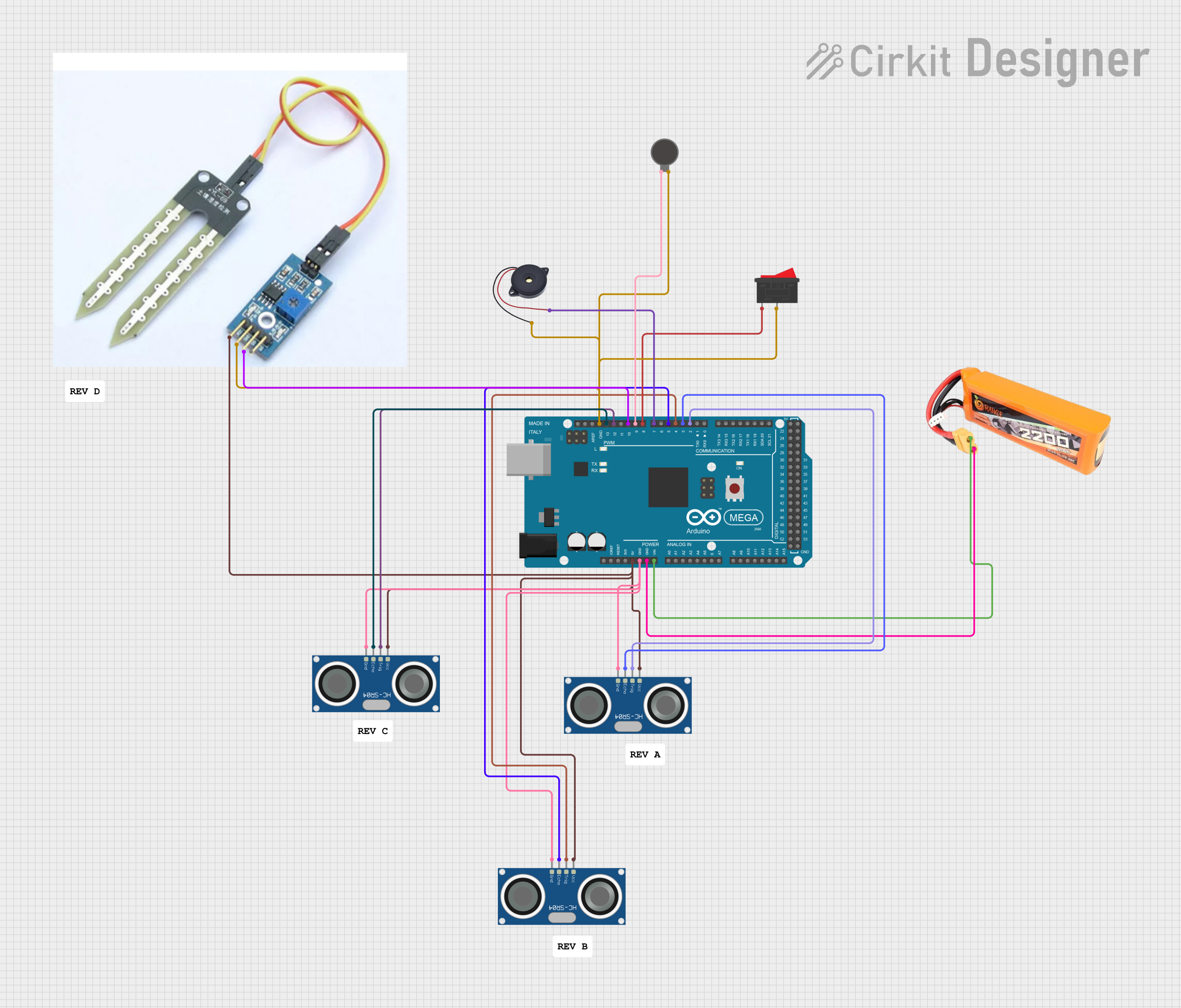
 Open Project in Cirkit Designer
Open Project in Cirkit Designer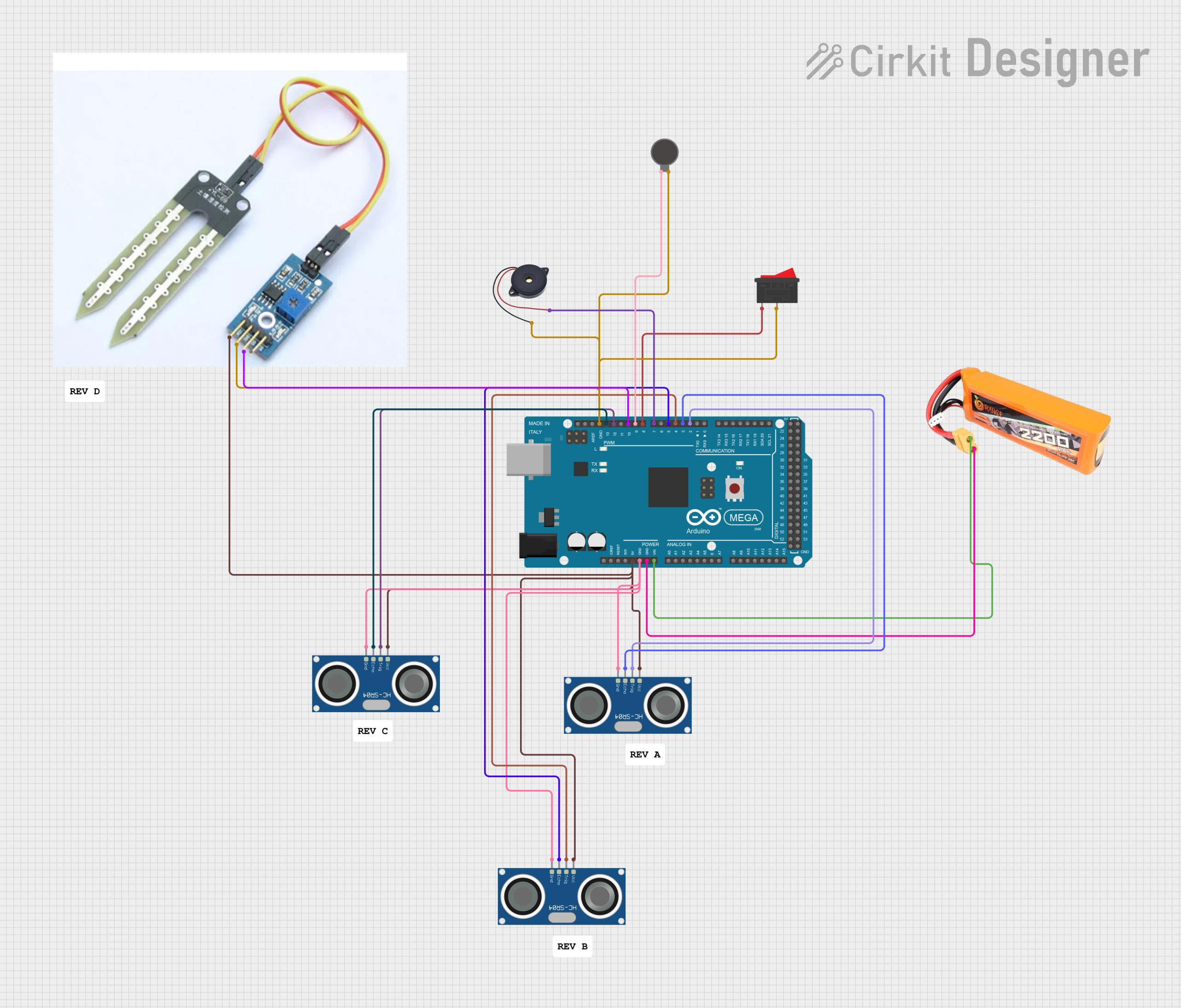
 Open Project in Cirkit Designer
Open Project in Cirkit Designer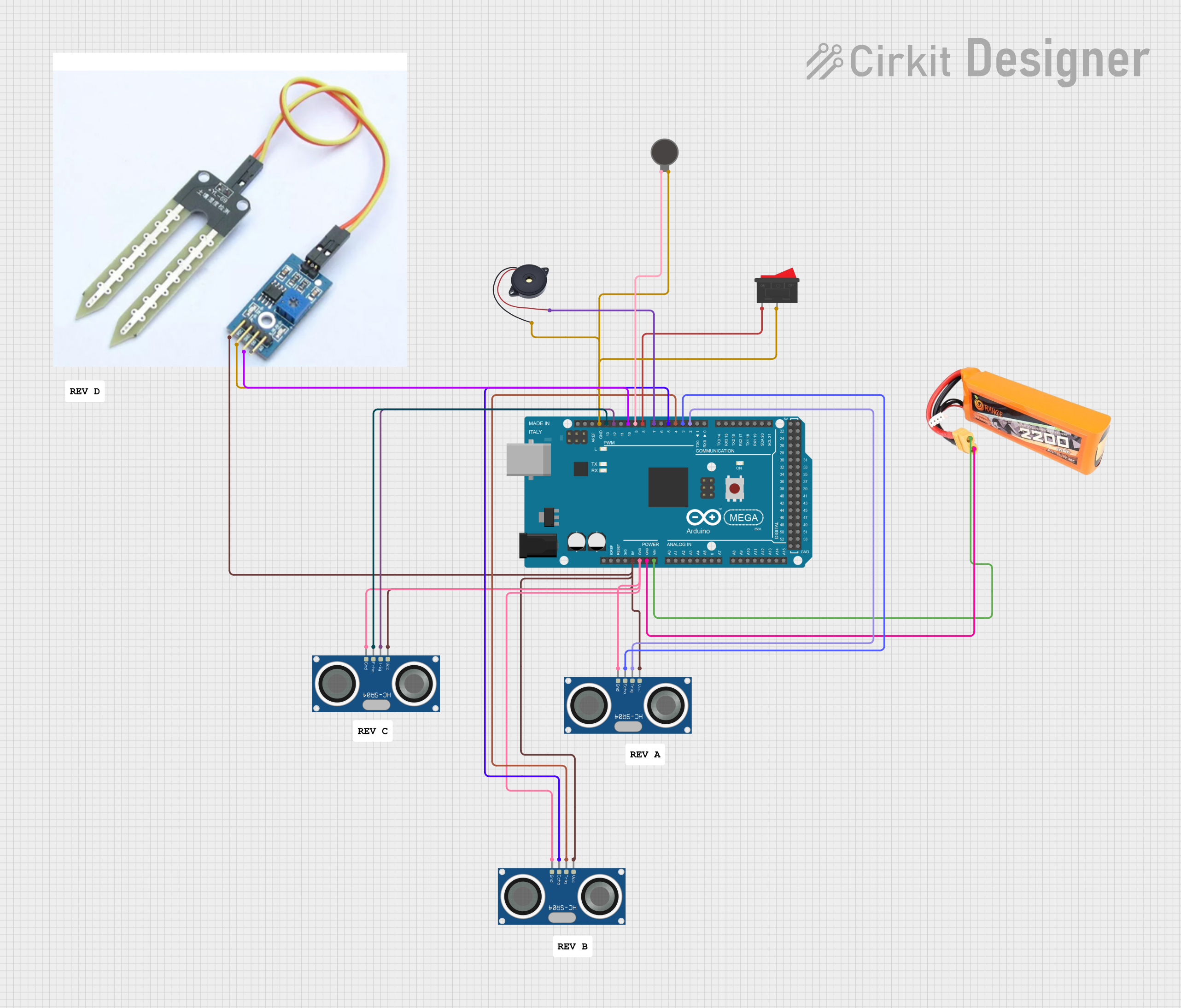
 Open Project in Cirkit Designer
Open Project in Cirkit Designer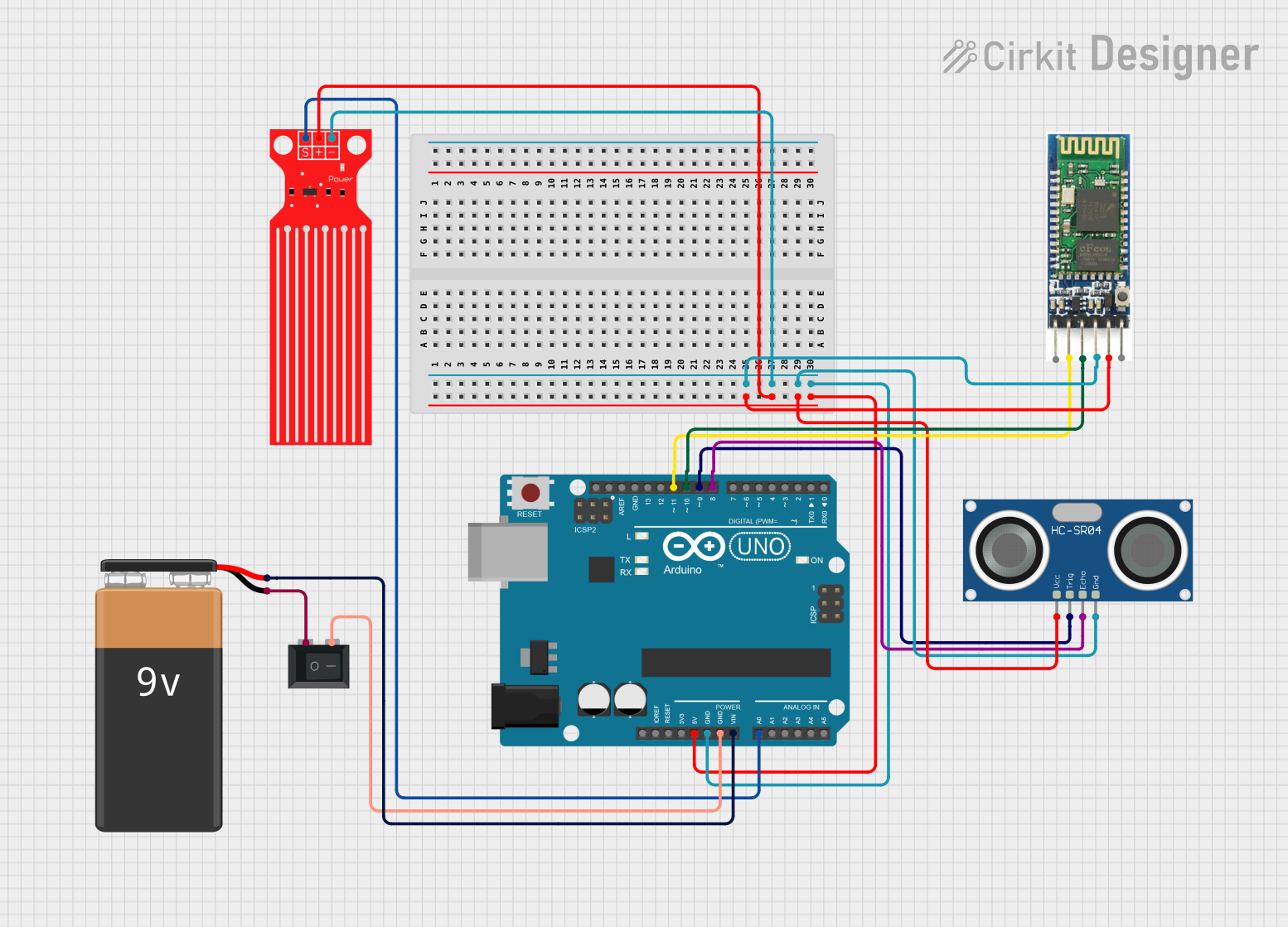
 Open Project in Cirkit Designer
Open Project in Cirkit DesignerExplore Projects Built with Ultrasonic Waterproof

 Open Project in Cirkit Designer
Open Project in Cirkit Designer
 Open Project in Cirkit Designer
Open Project in Cirkit Designer
 Open Project in Cirkit Designer
Open Project in Cirkit Designer
 Open Project in Cirkit Designer
Open Project in Cirkit DesignerCommon Applications and Use Cases
- Water level monitoring in tanks or reservoirs
- Obstacle detection in robotics
- Parking assistance systems
- Outdoor security systems
- Industrial automation in wet or humid environments
Technical Specifications
Below are the key technical details of the Ultrasonic Waterproof Sensor:
| Parameter | Value |
|---|---|
| Operating Voltage | 3.3V to 5V |
| Operating Current | ≤ 15mA |
| Detection Range | 20cm to 450cm |
| Accuracy | ±1cm |
| Operating Frequency | 40kHz |
| Waterproof Rating | IP67 |
| Operating Temperature | -15°C to +70°C |
| Output Signal | Digital (High/Low) or PWM |
Pin Configuration and Descriptions
The Ultrasonic Waterproof Sensor typically has four pins. Below is the pinout and description:
| Pin | Name | Description |
|---|---|---|
| 1 | VCC | Power supply pin. Connect to 3.3V or 5V. |
| 2 | TRIG | Trigger pin. Send a HIGH pulse to initiate ultrasonic wave transmission. |
| 3 | ECHO | Echo pin. Outputs a pulse width proportional to the distance of the detected object. |
| 4 | GND | Ground pin. Connect to the ground of the power supply. |
Usage Instructions
How to Use the Component in a Circuit
- Power the Sensor: Connect the VCC pin to a 3.3V or 5V power source and the GND pin to the ground.
- Trigger the Sensor: Send a HIGH pulse of at least 10 microseconds to the TRIG pin to initiate ultrasonic wave transmission.
- Read the Echo: Measure the duration of the HIGH pulse on the ECHO pin. This duration corresponds to the time taken for the ultrasonic waves to travel to the object and back.
- Calculate Distance: Use the formula below to calculate the distance: [ \text{Distance (cm)} = \frac{\text{Pulse Duration (µs)} \times 0.034}{2} ] The factor 0.034 accounts for the speed of sound in air (340 m/s), and the division by 2 accounts for the round trip of the ultrasonic waves.
Important Considerations and Best Practices
- Ensure the sensor is mounted securely to avoid inaccurate readings due to vibrations.
- Avoid placing the sensor near reflective surfaces that could interfere with the ultrasonic waves.
- Use a pull-down resistor on the ECHO pin if the signal is unstable.
- For outdoor applications, ensure the sensor is not obstructed by debris or dirt.
Example Code for Arduino UNO
Below is an example code to interface the Ultrasonic Waterproof Sensor with an Arduino UNO:
// Define pins for the Ultrasonic Waterproof Sensor
const int trigPin = 9; // TRIG pin connected to digital pin 9
const int echoPin = 10; // ECHO pin connected to digital pin 10
void setup() {
pinMode(trigPin, OUTPUT); // Set TRIG pin as output
pinMode(echoPin, INPUT); // Set ECHO pin as input
Serial.begin(9600); // Initialize serial communication
}
void loop() {
// Send a 10µs HIGH pulse to the TRIG pin
digitalWrite(trigPin, LOW);
delayMicroseconds(2);
digitalWrite(trigPin, HIGH);
delayMicroseconds(10);
digitalWrite(trigPin, LOW);
// Measure the duration of the HIGH pulse on the ECHO pin
long duration = pulseIn(echoPin, HIGH);
// Calculate the distance in cm
float distance = (duration * 0.034) / 2;
// Print the distance to the Serial Monitor
Serial.print("Distance: ");
Serial.print(distance);
Serial.println(" cm");
delay(500); // Wait for 500ms before the next measurement
}
Troubleshooting and FAQs
Common Issues and Solutions
No Output or Incorrect Readings:
- Ensure the sensor is powered correctly (3.3V or 5V).
- Verify the connections to the TRIG and ECHO pins.
- Check for obstructions or reflective surfaces near the sensor.
Unstable or Fluctuating Readings:
- Use a pull-down resistor on the ECHO pin to stabilize the signal.
- Ensure the sensor is mounted securely to avoid vibrations.
Short Detection Range:
- Ensure the sensor is not obstructed by dirt or debris.
- Verify that the object being detected is within the specified range (20cm to 450cm).
FAQs
Q: Can this sensor be used underwater?
A: No, the sensor is waterproof but not designed for underwater use. It is suitable for wet or humid environments but should not be submerged.
Q: What is the maximum detection range?
A: The sensor can detect objects up to 450cm (4.5 meters) away.
Q: Can I use this sensor with a 3.3V microcontroller?
A: Yes, the sensor operates with both 3.3V and 5V power supplies, making it compatible with 3.3V microcontrollers like the ESP32.
Q: How do I clean the sensor?
A: Use a soft, damp cloth to clean the sensor. Avoid using abrasive materials or submerging the sensor in water.